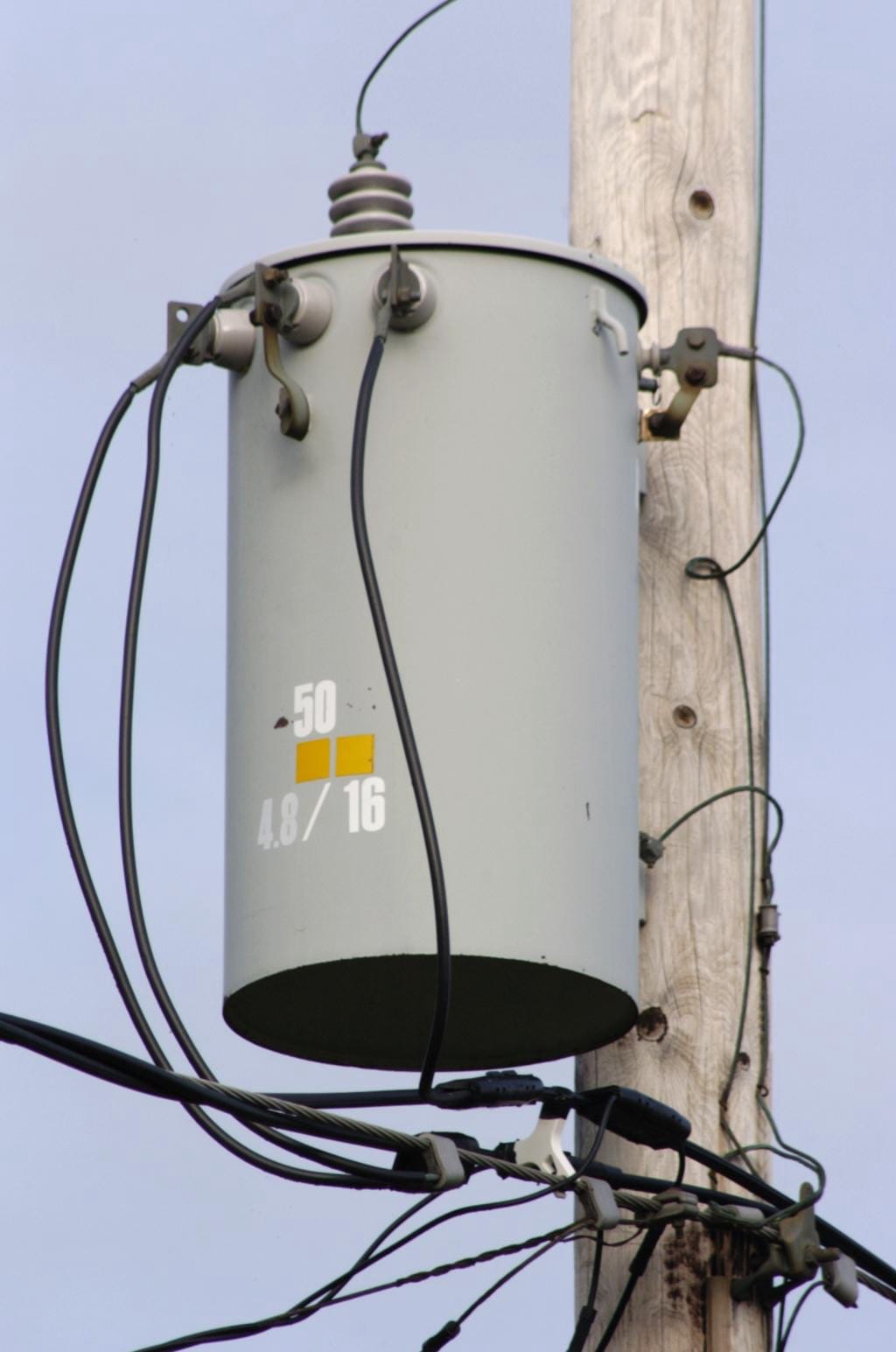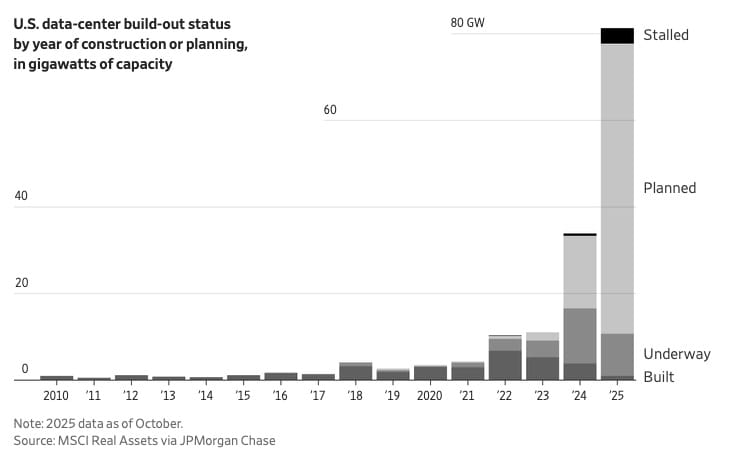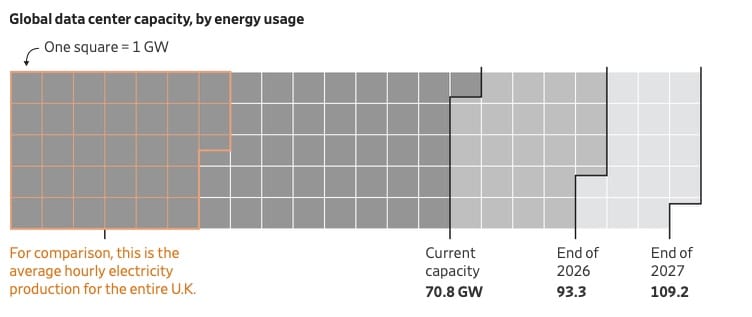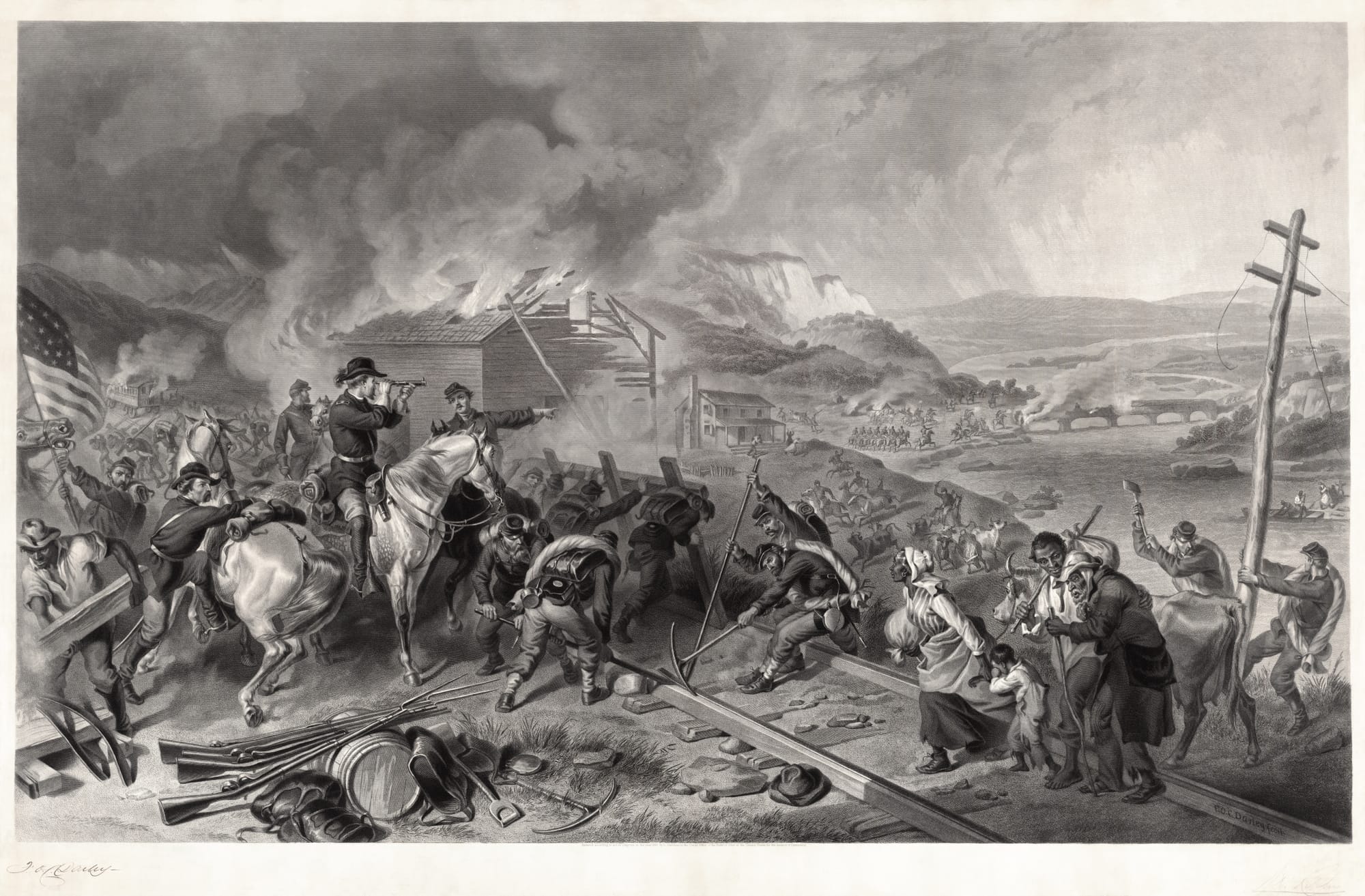Top 5 US news stories
November 14 2025

AI 'Gold Rush' Hits Physical Wall as Infrastructure, Power Lag Behind
Pessimism Grows for 2026 Grads as Cooling Market, AI Threaten Hiring
Texas A&M Limits Race, Gender Talk; Indiana Prof Removed Over 'MAGA' Lesson
Trump Administration Reverses Biden Ban, Opens Alaska Reserve to Drilling
Kremlin Enforces Widespread Military, Patriotic Training in Russian Schools
AI 'Gold Rush' Hits Physical Wall as Infrastructure, Power Lag Behind
Here’s a way to evaluate the riskiness of the world’s collective investment in artificial intelligence: Can we even build all the necessary physical infrastructure? And if so, will the resulting AI-powered products generate enough revenue to pay back that investment? The rate at which tech companies and startups are investing in AI shows no signs of slowing. In their latest financial reports, all of the big spenders revealed that their current investments had grown significantly, and projected that this trend would continue. All this investment has translated into record spending on the stuff that goes into data centers—aka “AI supercomputers”—all those chips, servers, HVAC systems, transformers, gas turbines, power lines and power plants. There are absolute, physical limits to how quickly all of that can be delivered. As a result, some projects are already being delayed. There are huge numbers of AI data centers in the planning stage, which means developers are in the process of securing land and getting permits, says Steve Tusa, a managing director at JPMorgan Chase. Today’s record number of data centers at the planning stage is indicative of what Raymond James managing director Frank Louthan calls “kind of a gold rush mentality.” Connecting these planned data centers to power and fiber, and finding a buyer or tenant who wants one, in that particular location is another matter.

Any key component of an AI supercomputer that is in short supply will determine how much AI infrastructure can actually be built. For example, even if there were enough power available for every new data center envisioned, there is currently a shortage of transformers, those gray, house-size boxes that connect buildings to the power grid, says Schneider of Goldman Sachs. As a result, his projection for how much new data-center capacity will actually be built across the world through the end of 2027 is relatively conservative compared with other Wall Street and real-estate industry estimates.

Scott Strazik is chief executive of GE Vernova, one of the biggest U.S. manufacturers of equipment to generate electricity, such as transformers and natural-gas turbines. Strazik recently said on The Wall Street Journal’s Bold Names podcast that nearly all of the company’s output is booked through 2028. Strazik says that meeting the projected demands for U.S. electricity production isn’t something his industry can solve in the next five years, but rather in 10 or 15. Meanwhile, there are other bottlenecks, such as securing construction permits and connecting turbines to natural gas.
WSJ
Pessimism Grows for 2026 Grads as Cooling Market, AI Threaten Hiring
Employers have a warning for the Class of 2026: Next spring’s graduate-hiring market is likely to be even worse than this year’s. Six months out from graduation season, more than half of 183 employers surveyed by the National Association of Colleges and Employers rate the job market for the Class of 2026 as poor or fair. That is the most pessimistic outlook since the first year of the pandemic, according to the survey, which is widely seen as an early signal of graduate hiring each year. A cooling job market is darkening that outlook. In recent months, employers from Amazon.com to United parcel Service have revealed plans to cut thousands of jobs. The latest is Verizon Communications, which, according to people familiar with the matter, plans to cut 15,000 jobs over the next week in its largest reduction ever. Companies say the uncertain economic outlook has pushed them to hire more conservatively, and many are giving priority to recruits with some experience as opposed to fresh-from-college graduates. More executives are also speaking openly about the potential of artificial intelligence to bring deep job cuts and take over more tasks that new graduates are traditionally tapped to do.
WSJ
Texas A&M Limits Race, Gender Talk; Indiana Prof Removed Over 'MAGA' Lesson
A. Texas A&M University System regents voted Thursday to limit how instructors may discuss matters like gender identity and race ideology in classrooms, tightening the rules in a conservative state where debates over academic freedom have flared for months. Regents, who met in College Station on Thursday afternoon, unanimously backed a revised proposal decreeing that no courses “will advocate race or gender ideology, or topics related to sexual orientation or gender identity” without a campus president’s approval of the course and related materials. A related measure that regents approved said that faculty members could not “teach material that is inconsistent with the approved syllabus for the course.” Taken together, the policies represent an effort by Texas A&M system leaders to assert firmer control over classrooms at a time when Republican officials in the state have been accusing public universities of “indoctrinating” students with liberal ideas about race and gender — a movement that has unfolded in parallel to President Trump’s campaign to pressure elite schools. Professors have fired back that conservative politicians are seeking to stifle open debates and intellectual inquiry.
B. A professor who showed a graphic labeling the “Make America Great Again” slogan as covert white supremacy has been removed from teaching a class under a new Indiana law meant to foster “intellectual diversity.” The professor’s lesson came to light after an Indiana University student filed a complaint with a U.S. senator, Jim Banks, a staunch ally of President Trump. The senator then contacted the campus. The graphic is a widely used illustration that shows a pyramid with examples of statements and behavior that might be considered overt or covert white supremacy. The senator’s intervention led the university’s School of Social Work to suspend the professor, Jessica Adams, from teaching the class, called “Diversity, Human Rights and Social Justice.” Ms. Adams said the intent of the graphic had been misinterpreted.
NYT
Trump Administration Reverses Biden Ban, Opens Alaska Reserve to Drilling
The Trump administration announced Thursday that oil and gas drilling would be allowed in a fragile expanse of tundra and wetlands in northern Alaska that is home to caribou, grizzly bears and thousands of migratory birds. The move reverses actions taken during the Biden administration to restrict development in half of the National Petroleum Reserve-Alaska, 23 million acres of federal land in the North Slope. Despite having “petroleum” in its name, the expanse is some of the last remaining pristine wilderness in the country and contains some of the most important wildlife habitat in the Arctic. The administration said in June that it planned to open the reserve to drilling and mining; Thursday’s announcement was the final step. Interior Secretary Doug Burgum said it would “unlock Alaska’s energy potential, create jobs for North Slope communities and strengthen American energy security.” It was the latest in a series of the Trump administration’s aggressive efforts to expand fossil fuel production in the United States. Last month, the government finalized plans to open the coastal plain of the Arctic National Wildlife Refuge in Alaska to oil and gas drilling. In the coming days, the Interior Department is also expected to propose opening vast new stretches of federal waters to oil and gas development, including areas off the coast of California.
NYT
Kremlin Enforces Widespread Military, Patriotic Training in Russian Schools
A class of Russian first-graders stood to attention this fall as a soldier who had served on the front line in Ukraine inspected their military uniforms. “Check your dress!” ordered the serviceman. “Your buckles should face not left, not right, but straight ahead.” The pupils, age 6 to 8, adjusted collars, swiveled belts and repositioned the name badges on their chests. Then, they settled behind their desks for an hour of Russian language study. Drills of this kind, which took place in the Kursk region bordering Ukraine and were broadcast on Russian state television, are happening across Russia as the Kremlin reaches into the country’s schools to prepare potential combatants for future wars. It is part of a dramatic transformation of Russia’s education system that gained pace after the Kremlin’s annexation of Crimea in 2014 but was supercharged by the full-scale invasion of Ukraine in 2022. As the conflict approaches the four-year mark, military-style training and war topics are embedded in Russia’s school curriculum, while the budget for such programs has ballooned as the focus has turned to the youngest grades. By eighth grade, weapons training—once extracurricular—is now mandatory. Teens are taught army discipline, military history and how to assemble Kalashnikovs and fly drones. History textbooks portraying the West as Russia’s enemy and Ukraine as its stooge will soon be rolled out for the youngest grades, the government says. Outside of the classroom, the Defense Ministry has its own Youth Army, with a claimed 1.85 million members age 8 to 18 integrated into the school system.

WSJ
November 14 1864: Union General William Tecumseh Sherman began his March to the Sea across Georgia from Atlanta to Savannah
Union General William Tecumseh Sherman launched his famous March to the Sea from Atlanta toward Savannah on November 15, 1864, at a pivotal moment late in the American Civil War. After capturing and burning Atlanta, Sherman cut his own supply lines and moved his 60,000-man army across Georgia with the strategic goal of breaking the Confederacy’s economic backbone and destroying white Southern civilian support for the war. His forces employed a scorched-earth strategy—tearing up railroads, seizing food and livestock, and dismantling industrial infrastructure—while avoiding major battles. The campaign devastated Confederate resources, contributed to collapsing morale, and helped accelerate the Confederacy’s defeat, culminating in Sherman’s gift of Savannah to President Lincoln in December 1864.

We are temporarily pausing our podcasts as we revamp our app so any article can be read as audio
Found a mistake? Have a news tip or feedback to share? Contact our newsroom using the button below:
citizen journal offers three flagship products: a daily national news summary, a daily Kansas news summary, and local news and school board summaries from 29 cities across 5 states. Use the links in the header to navigate to national, kansas, and local coverage. Subscribe to each, some, or all to get an email when new issues are published for FREE!
Brought to you by (click me!)
Sources
- https://www.wsj.com/tech/ai/when-ai-hype-meets-ai-reality-a-reckoning-in-6-charts-bf8043b4?mod=hp_lead_pos2
- https://www.wsj.com/lifestyle/careers/2026-graduates-job-market-7928bcd7?st=sCzbZJ&reflink=article_copyURL_share
- httpss://www.nytimes.com/2025/11/13/us/texas-am-gender-race-ideology-rules-classroom.html
- httpss://www.nytimes.com/2025/11/13/us/indiana-university-professor-white-supremacy-lesson.html
- httpss://www.nytimes.com/2025/11/13/climate/trump-revokes-biden-ban-on-drilling-mining-in-alaska-wilderness.html
- httpss://www.wsj.com/world/russia/putin-is-turning-eighth-grade-classrooms-into-army-training-grounds-34208dab?mod=hp_lead_pos9

